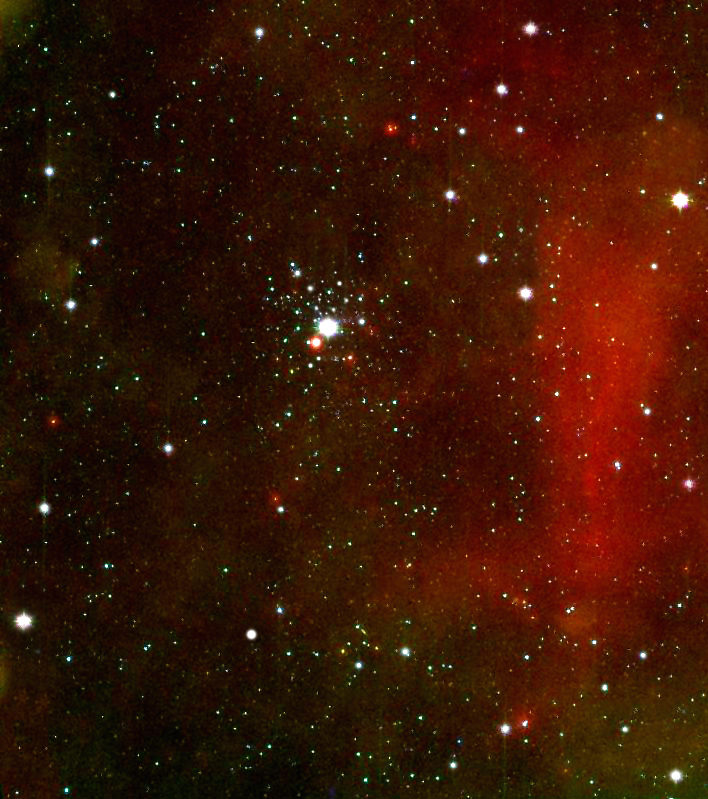[/caption]
After examining the 5-million-year old star cluster NGC 2362, astronomers say that planets like Jupiter must form quickly because the material that form giant gas planets disappears in just few million years in young protoplanetary (planet forming) systems. Using NASA’s Spitzer Space Telescope, astronomers from the Smithsonian Center for Astrophysics found that all stars in this cluster with the mass of the Sun or greater have lost their protoplanetary disks, and only a few stars less massive than the Sun retain their protoplanetary disks. These disks provide the raw material for forming gas giants like Jupiter. Therefore, gas giant planets have to form in less than 5 million years or they probably won’t form at all. However, the material to form rocky terrestrial planets like Earth appears to stick around much longer.
“Even though astronomers have detected hundreds of Jupiter-mass planets around other stars, our results suggest that such planets must form extremely fast. Whatever process is responsible for forming Jupiters has to be incredibly efficient,” said lead researcher Thayne Currie of the Harvard-Smithsonian Center for Astrophysics. Currie presented the team’s findings at a meeting of the American Astronomical Society in Long Beach, California.
Even though nearly all gas giant-forming disks in NGC 2362 have disappeared, several stars in the cluster have “debris disks,” which indicates that smaller rocky or icy bodies such as Earth, Mars, or Pluto may still be forming.
“The Earth got going sooner, but Jupiter finished first, thanks to a big growth spurt,” explained co-author Scott Kenyon.
Kenyon added that while Earth took about 20 to 30 million years to reach its final mass, Jupiter was fully grown in only 2 to 3 million years.
Previous studies indicated that protoplanetary disks disappear within 10 million years. The new findings put even tighter constraints on the time available to create gas giant planets around stars of various masses.


Creationists will probably hate this! More proof that we did not evolve in a location in the universe that happens to be very unique.
There are so many places out there that actually have the right onditions to get life evolving out there. We are not that unique.
It seems to be just a matter of time before we actually can detect other Earths out there that could have life.
Olaf, you will have to have a conversation with a Mormon, they have an explanation as to how they populate new worlds. I don’t know if that is Creationism but it certainly is creative. It’s a bit like suicide bombers getting 7 virgins in heaven for their heroism.
Yeah, I think you get to be the god of your own planet. It’s nearly as radiculous as the scientology virus.
Open cluster NGC 2362 in Canis Major is one of the most beautiful of that constellation and Canis Major has a boatload of them.
The bright star of Tau Canis Majoris occupies center stage and I’m wondering if any of you more learned types could give me an indication of its size and mass could interfere with the planetary disc formation process.
I haven’t heard that any Lutherans are getting to be the God of their own planet. We’re way too humble for that. We’re probably just hoping for lutefisk on the next world.
Depending on your interpritation of the Bible, there isn’t anything that prohibits life on other worlds.
It wouldn’t destroy my faith. It would just leave me with some questions…
This is quite a hot info. I’ll share it on Facebook.